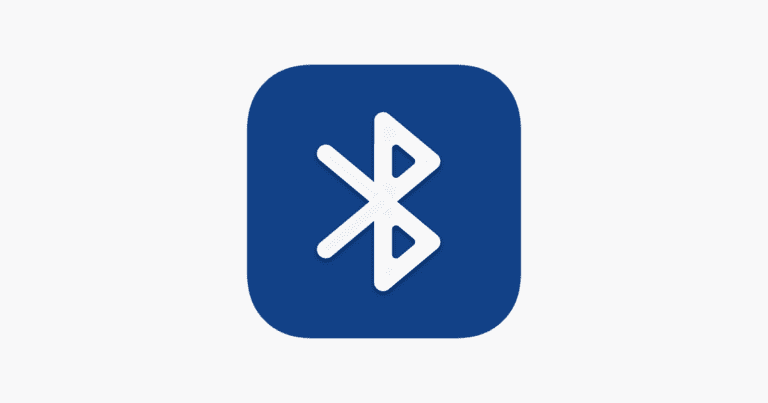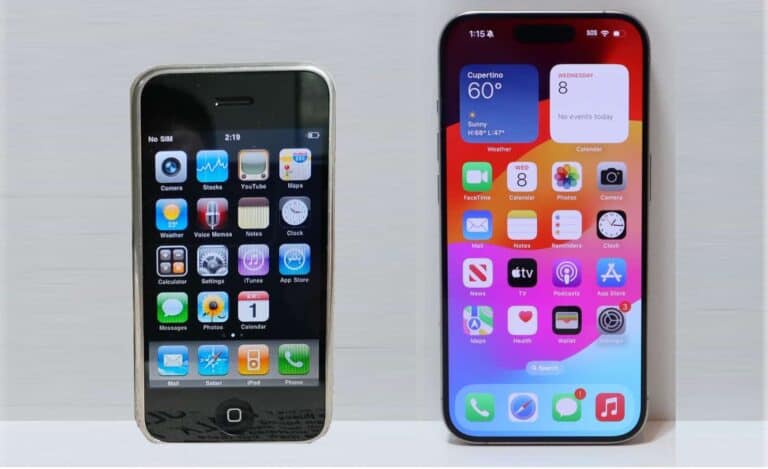
Have you ever wanted to text someone without revealing your actual phone number? There are times when privacy matters, whether you’re contacting a marketplace seller or reaching out to someone you don’t know well. You can send anonymous text messages through third-party services like VoIP apps, websites, or specialized texting apps that hide your real number.
Privacy concerns are valid in today’s digital world. Many people receive uncomfortable messages from unknown numbers and wonder how this happens. The technology behind anonymous texting has been around for years, but not everyone knows how to use it properly or safely.
When sending texts anonymously, you have several options. Some people use Google Voice to generate an alternative number, while others prefer email-to-text services that cost nothing and require no app installation. Various apps also offer hidden caller ID features that protect your identity while communicating.
Sometimes you may want to send a text without revealing your personal phone number—whether it’s for privacy, business, or a one‑time message. Here are the safest and most effective methods to do it.
⚠️ Quick Note on Privacy & Legality
- Use these methods responsibly—never for harassment, scams, or illegal activity.
- Some regions restrict anonymous messaging, so check your local laws before proceeding.
✅ Method 1: Hide Your Caller ID (Built‑in Phone Feature)
Most carriers allow you to block your number temporarily.
- iPhone:
- Go to Settings → Phone → Show My Caller ID → Toggle Off.
- Android:
- Open Phone app → Settings → Calls → Additional Settings → Caller ID → Hide Number.
- Temporary method: Add a prefix before the number you dial (e.g.,
*67in the US,141in the UK).
⚠️ Works for calls, but not always for SMS.
✅ Method 2: Use an Anonymous Texting Website
Several online services let you send a text without showing your number.
- Examples: AnonTexter, FreeSMS websites, or other anonymous SMS portals (source: AnonTexter).
- Simply enter the recipient’s number, type your message, and send.
⚠️ Some free sites may insert ads or have limits. Use reputable services only.
✅ Method 3: Use a Temporary/Second Number App
Apps generate a disposable number that hides your real one.
- Popular options: Burner, Hushed, TextNow, Google Voice (source: Burner App).
- Great for online selling, dating, or business use.
- You can delete the number anytime.
✅ Method 4: Send a Text via Email
Most carriers provide an email-to-SMS gateway.
- Format:
[phone number]@[carrier domain]- Example (US carriers):
- AT&T:
[email protected] - Verizon:
[email protected] - T-Mobile:
[email protected]
- AT&T:
- Example (US carriers):
- The recipient gets your email as a text, without your phone number showing.
✅ Method 5: Use Encrypted Messaging Apps
If privacy (not anonymity) is the goal, apps like Signal, Telegram, or WhatsApp let you message people without exposing your actual phone number in some cases (via usernames or linked accounts).
🚫 What NOT to Do
- Don’t use shady apps that request excessive permissions.
- Avoid services that ask for your credit card without clear terms.
- Never use anonymous texting for harassment—it can still be traced if misused.
Overall
- Quick & Free: Use email-to-SMS or Caller ID blocking.
- Best for Ongoing Use: Burner apps like Hushed or Google Voice.
- One‑Time Anonymous Text: Use a reputable anonymous SMS website.
Key Takeaways
- Anonymous texting requires using third-party services like VoIP apps or websites rather than your phone’s default messaging app.
- Privacy-focused texting solutions include Google Voice, email-to-text services, and specialized apps with hidden caller ID features.
- Always consider legal and ethical implications when sending anonymous messages to ensure you’re using this technology responsibly.
Understanding Anonymity and Privacy in Communication
In today’s digital world, keeping communication private has become increasingly important. Many people seek ways to protect their identity while still maintaining necessary connections through messaging.
The Importance of Protecting Personal Information
When sending text messages, your phone number can reveal more about you than you might realize. This piece of personal information can be used to track your location, access your social media profiles, or even attempt identity theft.
Privacy concerns are growing as cybercrime increases. According to recent trends, people are becoming more cautious about sharing contact details with businesses, new acquaintances, or when posting in online forums.
There are legitimate reasons someone might need anonymous texting options:
- Reporting sensitive information
- Protecting oneself from harassment
- Maintaining professional boundaries
- Preserving privacy in one-time communications
- Testing a phone number without revealing identity
Defining Anonymous and Private Messaging
Anonymous messaging means sending texts without revealing who sent them. The recipient cannot identify the sender through the message itself or associated metadata.
Private messaging, on the other hand, refers to communication that remains confidential between parties, though identities may be known to each other.
Several technologies support these privacy needs. VoIP services, specialized apps, and websites offer ways to send texts without showing your actual number.
Some services like Bluntt allow completely anonymous communication where your identity remains unknown to recipients.
For iPhone users, simple tricks like dialing *67 before a number can hide caller ID for basic privacy needs.
Methods to Send Text Messages Anonymously
There are several reliable ways to send text messages without revealing your actual phone number. These methods offer varying levels of privacy and convenience depending on your specific needs.
Using Messaging Apps with Privacy Features
Many popular messaging apps now include privacy features that help keep your identity hidden. Signal Private Messenger stands out as one of the most secure options. It uses end-to-end encryption to protect messages and doesn’t store your data.
Telegram offers a “Secret Chat” feature that includes self-destructing messages. Users can communicate without revealing their phone numbers to everyone.
WhatsApp, while requiring a phone number to register, provides end-to-end encryption for all messages. For complete anonymity, people can use a temporary or secondary phone number during setup.
These apps typically require both sender and recipient to have the same application installed. This limitation makes them ideal for ongoing private conversations rather than one-time anonymous messages.
Web-based Messaging Services
Several websites allow users to send anonymous text messages without installing any applications. Services like Anonymoustext.com provide simple interfaces to send texts without revealing the sender’s identity.
Textem.net and similar platforms function by allowing users to enter the recipient’s phone number and message content. The text appears from a random or masked number when delivered.
Most web services offer:
- No registration requirements
- One-time use capability
- Delivery tracking features
Some paid options provide additional features like scheduled messages or delivery confirmation. These services work with standard SMS, meaning recipients don’t need special apps to receive the messages.
The convenience of web-based options makes them perfect for situations where anonymity is needed for a single message rather than ongoing conversations.
Technical Considerations for Anonymity
When sending anonymous texts, several technical factors affect your privacy level. Understanding these elements can help you make better choices about which methods to use and what precautions to take.
Caller ID and Its Role in Messaging
Caller ID technology reveals your phone number to recipients when you send standard text messages. This identification system was designed for transparency but can compromise privacy when you need to remain anonymous.
Most carriers automatically show your caller ID information with each message. Some services offer “Caller ID blocking” features, but these typically only work for voice calls, not SMS messages.
Virtual phone numbers provide an effective workaround. These temporary numbers act as intermediaries, masking your real number when texting. VoIP (Voice over Internet Protocol) services often include this functionality.
It’s important to note that even with blocked caller ID, telecommunications companies still maintain records of message origins for legal compliance.
Understanding Encryption Protocols
Encryption protects the content of messages as they travel across networks. Different messaging platforms use varying levels of encryption that directly impact anonymity.
End-to-end encryption offers the strongest protection, ensuring only the sender and recipient can read message contents. This prevents interception by third parties, including the service provider itself.
Many anonymous texting services use TLS (Transport Layer Security) protocols to encrypt messages in transit. However, this only protects the message while traveling—not at rest on servers.
Users should be aware that encryption doesn’t automatically hide identity. While message contents may be secure, metadata (information about when and where messages originated) might still be collected.
For maximum security, applications that combine anonymous phone numbers with strong encryption protocols provide the best protection against both content exposure and identity revelation.
Step-by-Step Guide to Sending Anonymous Texts
Sending texts without revealing your real phone number requires using specialized apps or services designed for privacy. These methods allow you to communicate while keeping your personal information protected.
Choosing the Right App or Service
Several apps are designed specifically for anonymous text messaging. Popular options include Hushed, Burner, and CoverMe, each offering different features and privacy levels.
When selecting an app, users should consider:
- Price: Some apps offer free trials but require subscriptions for continued use
- Features: Look for apps with message encryption and self-destructing texts
- Reliability: Check user reviews for service quality
- Country availability: Not all services work internationally
Many of these apps provide temporary phone numbers that function like regular numbers but aren’t connected to personal information. This creates a buffer between the user’s identity and their communications.
Creating An Anonymous Profile
After downloading the chosen app, the next step involves setting up a private profile. Most anonymous messaging services require basic registration.
The setup process typically includes:
- Download the app from your device’s app store
- Open the application and create an account
- Select a phone number from available options (usually showing different area codes)
- Complete verification (sometimes requiring email but rarely personal phone numbers)
When creating profiles, users should avoid using identifying information. This means selecting usernames that don’t reveal real names and avoiding profile pictures that show faces or recognizable features.
Some services like CoverMe provide additional security by hiding the app itself behind password protection, making it harder for others to discover when accessing the device.
Sending Messages Without Revealing Your Number
Once the anonymous profile is established, sending texts becomes straightforward. The recipient will see only the temporary number rather than the sender’s actual phone number.
The messaging process works like this:
- Open the anonymous messaging app
- Enter the recipient’s phone number or select from contacts
- Type and send the message as normal
- The recipient receives a text from the temporary number
Most services allow users to maintain separate conversation threads with different contacts. This helps organize communications while keeping the anonymous number consistent for each recipient.
Remember that while these methods hide the original phone number, they don’t guarantee complete anonymity. Service providers still maintain records that could potentially be accessed through legal channels.
Maintaining Privacy and Security
When sending anonymous texts, protecting your identity and data requires both knowledge and vigilance. Privacy measures should be regularly updated to stay ahead of potential security threats.
Best Practices for Anonymous Texting
Always use services with end-to-end encryption when sending anonymous texts. This ensures that messages can only be read by the sender and recipient, not by the service provider or potential hackers.
Avoid sharing personal details in your messages that could reveal your identity. Even seemingly innocent information like location references or personal habits can be used to identify you.
Consider using a VoIP service like Google Voice or Burner apps rather than standard SMS for better privacy protection. These services create a buffer between your real number and recipients.
Use strong, unique passwords for all anonymous texting platforms. Password managers can help generate and store complex passwords securely.
Public Wi-Fi networks should be avoided when sending sensitive anonymous messages. These networks are often unsecured and vulnerable to interception.
Regularly Updating Security Measures
Set a calendar reminder to review privacy settings on all anonymous texting apps every 3-4 months. Privacy policies change frequently, and new options may become available.
Delete conversation histories regularly from both your device and cloud storage. Many people forget that deleting locally doesn’t remove cloud-stored copies.
Keep all apps and devices updated with the latest security patches. Outdated software often contains vulnerabilities that can compromise your privacy.
Enable two-factor authentication whenever possible on anonymous messaging platforms. This adds an extra layer of security beyond just a password.
Review app permissions periodically and revoke unnecessary access to your contacts, location, or other personal data. Many apps request more access than they actually need.
Legal and Ethical Considerations
When sending anonymous text messages, it’s important to understand both legal and ethical implications. Using text messages as digital evidence raises questions about privacy rights and legal boundaries.
“Spoofing” or disguising a phone number may be legal for legitimate purposes, but can cross into illegal territory when used for harassment, fraud, or deception. Many regions have laws against using technology to impersonate others with malicious intent.
Legal Concerns:
- Anti-harassment laws
- Anti-fraud regulations
- Impersonation statutes
- Electronic communication laws
Privacy considerations work both ways. While the sender may desire anonymity, recipients have rights regarding who contacts them and how their personal information is used.
Ethically, one should question why anonymity is needed. Legitimate reasons might include:
- Protection from stalkers
- Whistleblowing
- Surprise planning
- Business privacy
However, anonymous messaging should never be used for:
- Harassment or threats
- Scams or fraud
- Spreading misinformation
- Circumventing blocks or restraining orders
Services like Google Voice provide legitimate anonymity options while maintaining accountability behind the scenes.
Most reputable anonymous messaging services maintain records that can be subpoenaed by law enforcement if criminal activity is suspected. Complete anonymity is rarely guaranteed.
The golden rule applies: anonymous messaging should be used responsibly, with respect for others’ boundaries and clear understanding of applicable laws.
Troubleshooting Common Issues
Even with the best anonymous texting methods, problems can arise that prevent successful message delivery. Technical issues and configuration errors are common hurdles when trying to hide your number.
Technical Difficulties and Resolutions
If your anonymous texts aren’t being delivered, first check your internet connection. Many anonymous texting apps require stable internet to function properly. Try switching between Wi-Fi and mobile data to see if that resolves the issue.
Some users report receiving error messages about verification codes not arriving. In this case, try requesting a new code after waiting 5 minutes, or use an alternative phone number for verification.
When using email-to-text methods, messages might appear in recipients’ spam folders. Ask recipients to check their spam and add your email address to their contacts list.
For apps showing your real number despite privacy settings, force-close the app and clear its cache. Then recheck all privacy settings to ensure they’re correctly configured.
Obtaining Expert Assistance
For persistent issues, seeking professional help is often the best solution. Many anonymous texting apps offer dedicated customer support through in-app help centers or email support.
JustAnswer provides verified experts who can troubleshoot specific problems with anonymous texting services. These professionals can guide users through complex configuration issues that standard troubleshooting can’t resolve.
Tech support forums like Reddit’s r/privacy or r/techsupport communities offer peer assistance for anonymous communication challenges. When posting, users should describe their issue clearly without sharing personal details.
For carrier-specific problems with number blocking, contacting the mobile provider’s tech support directly often yields the fastest resolution. Representatives can verify that call blocking features are properly activated on the account.
Frequently Asked Questions
People often need to send texts without revealing their personal phone number. There are many options available across different devices and services, with varying levels of privacy and features.
What are the methods to send a text message anonymously on Android devices?
Android users have several options for sending anonymous texts. Apps like TextFree and TextNow allow users to obtain a different phone number for texting purposes.
Google Voice is another popular option that provides a free secondary number that can be used for texting without showing your real number.
Some Android users also utilize email-to-SMS gateways by sending an email to the recipient’s phone number at their carrier’s domain.
Is there a way to send texts discreetly on an iPhone without revealing my phone number?
iPhone users can use Google Voice to get a free alternate phone number for anonymous texting. This method works through the Google Voice app.
Apple’s iMessage service doesn’t automatically share your phone number when messaging other Apple users, but it does share your Apple ID email.
Apps such as Burner and Hushed provide temporary phone numbers specifically for iPhone users who want to keep their real number private.
Can I text someone in such a way that it won’t appear on my phone bill?
Using internet-based messaging apps like WhatsApp, Telegram, or Signal consumes data rather than counting as SMS messages on a phone bill.
Free texting websites and online services allow users to send messages that won’t appear on traditional phone bills. These services use internet connections instead of cellular networks.
Virtual phone number services typically don’t generate entries on cellular phone bills, as they operate through internet data.
Are there any free services for sending text messages anonymously?
Google Voice offers free virtual phone numbers that can be used for texting without revealing personal information.
TextFree and TextNow provide basic free services that allow users to send anonymous texts with some limitations on features.
Anonymous text websites like Anonymous Text and Pinger offer free options with varying degrees of anonymity.
How to trace an anonymous text message that was received?
Recipients can contact their mobile carrier to request information about the origin of suspicious messages. Carriers maintain records of message metadata.
Law enforcement agencies can trace anonymous texts with proper legal authorization, such as a court order or warrant.
Some private number texting services have records that can be accessed if there are legitimate concerns about harassment or threats.
What strategies exist for sending a text to multiple recipients without them seeing each other’s information?
Using BCC (blind carbon copy) in email-to-text services keeps recipient information private from other recipients.
Group messaging apps like GroupMe or WhatsApp groups show participants to each other, but private broadcast lists in some apps can hide recipient details.
Mass texting services designed for businesses often include options to send individual messages to multiple recipients simultaneously without revealing other recipients’ information.






